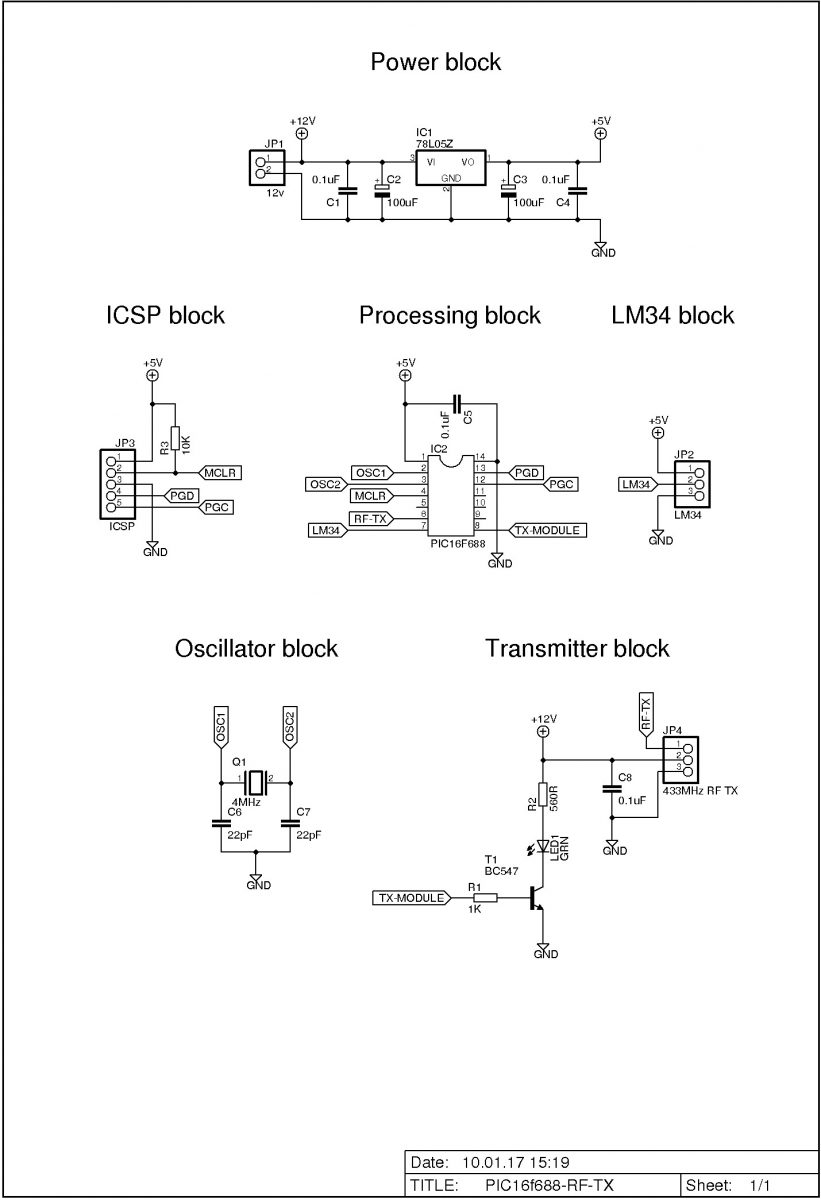ntroduction
In this article, I’ll show you one way to make a wireless thermometer using two PIC microcontrollers. One microcontroller, the PIC16F688, will measure voltage from an LM34, convert it to an ADC value, and transmit some data. The receiver will receive the data, and display a message on an LCD.
Sending data with the 433MHz transmitter is easy: in my case, I connect the PIC TX pin to the 433MHz data pin, then the transmitter sends whatever comes out the UART pin.
But receiving the data is the far more difficult part. The receiver will receive everything in its range. To sort out the data we want, we need some sort of protocol or error correction. In previous articles, I have used an Arduino with the VirtualWire library, and I have used a “synchronizing” string in another. In this article, I’m using another technique (this site inspired me). Now, I’m adding parity check to the transmitted data. The parity is being checked at the receiver end. While doing research for this article, I found a site with a VirtualWire library for PIC’s. One drawback I found, however, was that this library filled almost all my PICs memory.
Schematic diagrams:
Transmitter:
In the pictures below, you will see a MAX232 IC. This is added for debugging.
Unused pins are not tied to GND or to a testpad. None of the schematics are for production, they are for breadboard only.
for more detail: Make a Wireless Thermometer with a PIC Microcontroller


